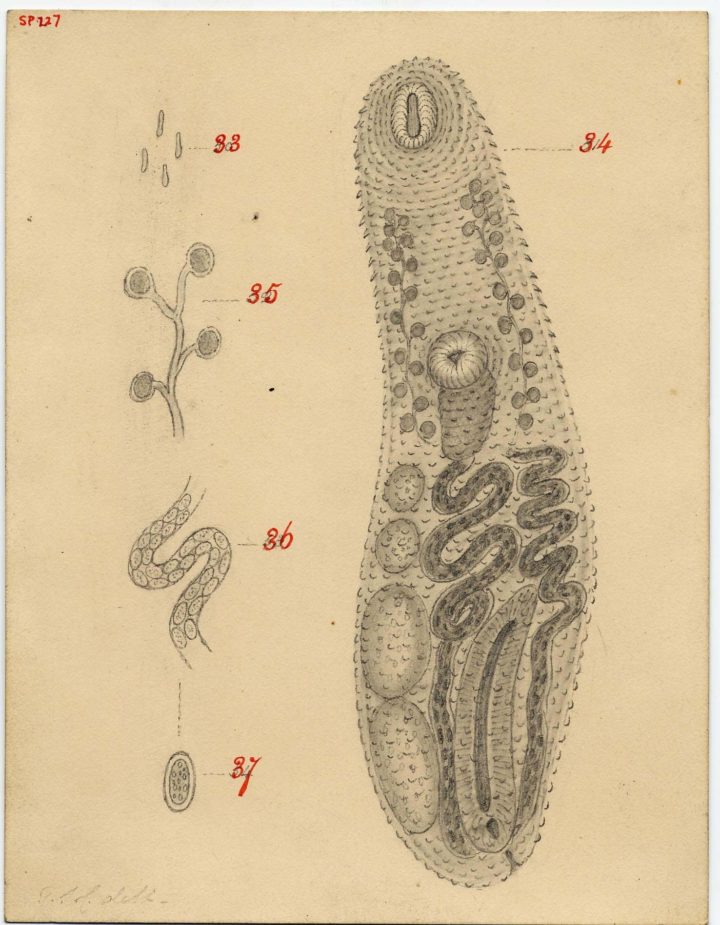Thomas Spencer Cobbold’s drawings of the hidden lives of parasites
Assistant Archivist Luke Thorne reveals a lifetime of "patient and accurate labour"
Published on 25th January 2021
The Collections Team has been busy planning for the months ahead even as we continue to work from home. One of our large projects has been to catalogue the Society Papers, a collection of lecture notes, letters and illustrations, which were presented and read at the Linnean Society’s meetings. The Society Papers were recently featured on our Twitter page as part of #ExploreYourArchives week, and while the whole collection is a treasure in its own right, many of these individual papers and drawings are worthy of their own story as one of our Treasures of the Month.

Some of the pieces in the collection that caught my eye were a series of pencil drawings and diagrams depicting different forms of Entozoa, better known as parasitic worms. These organisms inhabit the internal organs of animals, and can survive for many years on nourishment and protection from its host. The details in these drawings are striking, not only in their depiction of the internal organs, but also the locations of the parasites in the organs, and the expression of the different stages in the parasite lifecycle. It is both fascinating, and a bit unnerving, to see the sheer length of these organisms in these organs at the height of their prosperity!

These drawings were made by Dr Thomas Spencer Cobbold (1828-1886), who joined the Society as a Fellow in 1857, and was the foremost authority on animal parasites in England. His research into the anatomy, development and life history of Entozoa was considered ‘a worthy memorial of patient and accurate labour,’ and set a ‘standard of reference for all students of Helminthology’[1]. Cobbold exhibited 85 drawings of Entozoa in his “Observations on Entozoa, with notices of several new species” (SP/227), and further 33 in “On some new forms of Entozoa” (SP/229).
[1] Proceedings of the Linnean Society of London. (Session 1885–86.) November 5th, 1885, to June 17th, 1886, Proceedings Linnean Society London, Volume 96-98, Issue 1, October 1886, Page 140, https://doi.org/10.1111/j.1095-8312.1886.tb01461.x

While these are perhaps an example of some of our more gruesome looking drawings, they nonetheless remain an important contribution to the Society’s collection for furthering scientific knowledge of parasites.
Luke Thorne, Assistant Archivist
